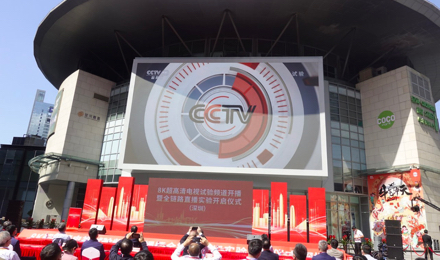Back
- Applications
- Products
- Support
- About HiSilicon
No Result

Television sets have been the focal point of the home entertainment universe for decades upon decades. They are capable of receiving broadcast signals from both wired and wireless TV stations, and displaying audio and video signals transmitted by external devices (such as STBs and DVDs) via a range of different analog and digital interfaces. In 2007, the first generation of networked smart TVs came into being, representing an innovative new paradigm for TV products. Smart TVs run a vast range of apps, and enable consumers to view live and on-demand video directly from the Internet. They have made TV content viewing an active process, which represents a major departure from the passively-received nature of traditional TV content. Smart TVs also support signal reception (wireless and wired), as well as a myriad of digital/analog interfaces, network interfaces (wireless and wired), audio/video signal processing methods, and image displays. Smart TVs have occupied as a similar role in entertainment and media as smartphones have in communications, serving as information and entertainment centers, smart home control hubs, and mediums for human-machine interaction. During its evolution, the smart TV industry has faced the following challenges:
Users expect immersive experiences bolstered by 4K/8K, quality audio, WDR, and HDR from next-level smart TVs.
Smart TVs serve as information and entertainment centers, smart home control hubs, and mediums for human-machine interaction.
Smart TVs generally need to be linked with other smart devices in order to provide a greater range of services.
Thanks to technical prowess a decade in the making, HiSilicon's smart TV solution supports proprietary HiStreaming technology, which equips smart TVs to quickly identify all peripheral devices that also support HiStreaming. The result is seamless, secure, and low-latency connections, and support for AI structured data transfers. This ensures that peripheral devices can be virtually operated and controlled as if they are local devices, providing users with the best possible experience. As a global leader in the smart TV SoC sector, HiSilicon offers a broad portfolio of smart TV SoCs that support HDR, AI picture quality (AI-PQ), motion estimation and motion compensation (MEMC), and in broad-ranging resolutions, from full high definition (FHD) to 4K/8K. All HiSilicon solutions are supported on HarmonyOS, Linux, and Android, as well as other mainstream operating systems. HiSilicon SoCs also come equipped with peripheral chipsets that pack the following features:
Supports configurable 4K/8K UHD, for enhanced picture quality on high-end TVs.
Features a large-screen timing controller (TCON) and screen source driver chipset, to deliver clear and reliable graphics.
Works in concert with HiSilicon AI Camera chipset portfolio and HiStreaming to provide an effortless user experience.
Supports numerous network access capabilities, including WiFi, 4G/5G, and WiFi/BT.

How HiSilicon's Hi-Imprex Engine Has Reshaped the Viewing Landscape

HiSilicon Partners with CCTV to Pilot 8K UHD Live Broadcasting
May 10, 2021
Apr 09, 2021
Mar 04, 2021
Dec 04, 2020
Nov 03, 2020
Jul 13, 2020
May 17, 2020
Apr 22, 2020
This site uses cookies. By continuing to browse the site you are agreeing to our use of cookies. Read our privacy policy